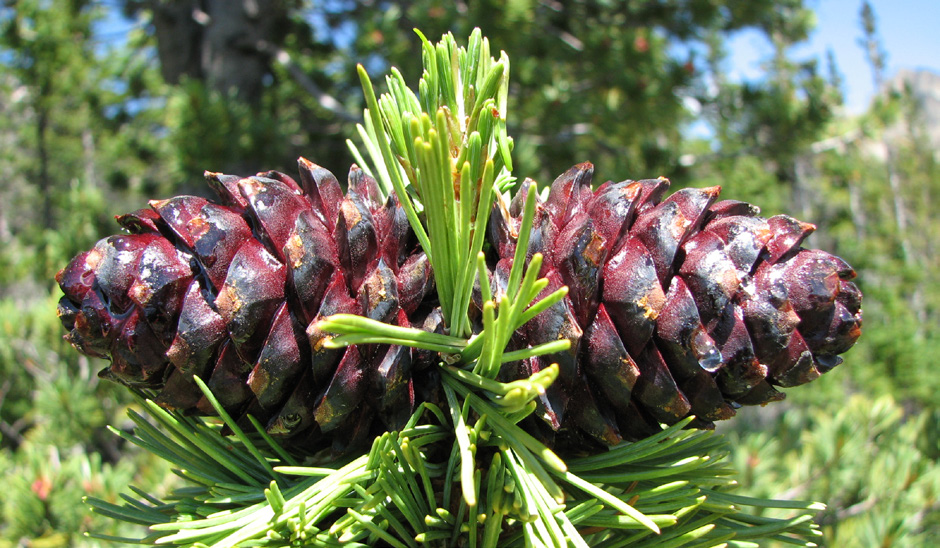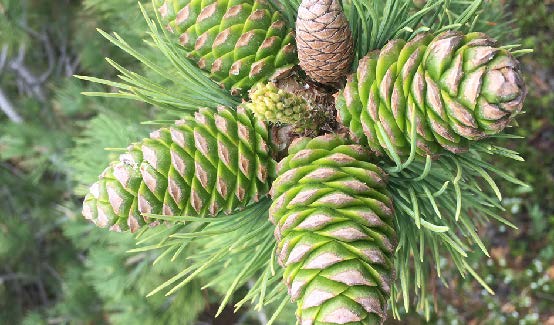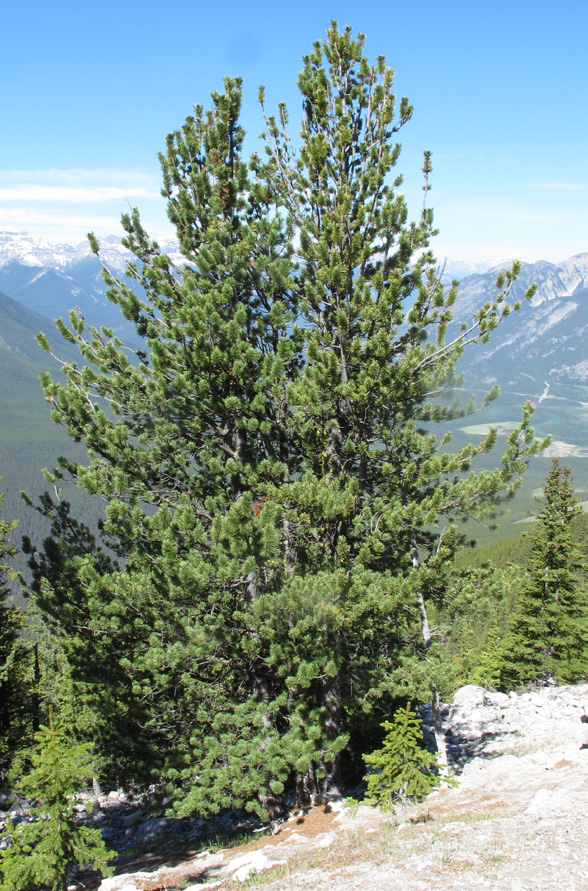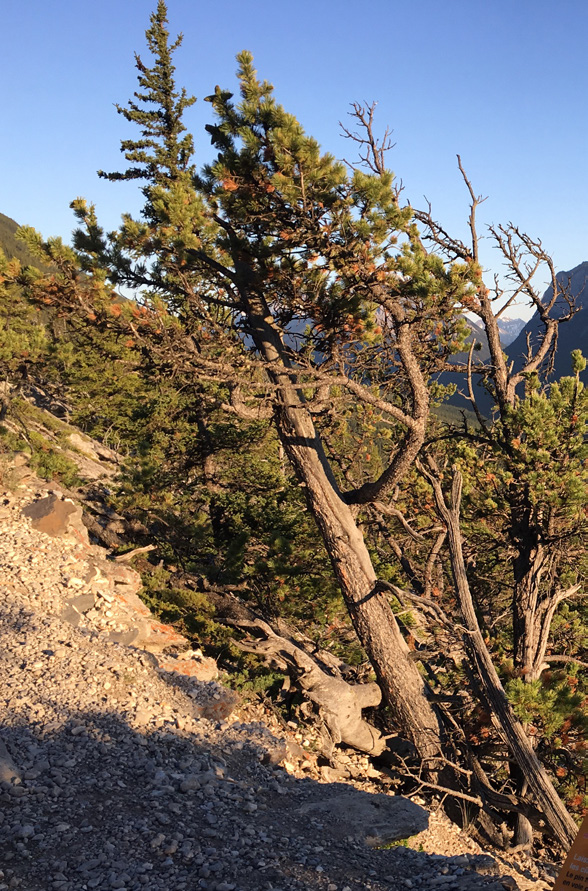Identifying Five-Needle Pines
Banff National Park
White Bark Pine
| Needles | Needles occur in bunches of five, ranging from 3 to 9 cms. They are stiff, slightly curved, usually bluish-green, and tend to be clumped towards the ends of the branches. |
|---|---|
| Cones and seeds |
 Cones range from 8 to 10 cms long and 6 to 10 cms wide, are egg-shaped and grow at right angles to the branch. Cones are permanently closed and seeds are dispersed largely by wildlife such as the Clark’s Nutcracker, chipmunks and squirrels.
|
| Bark | Bark is thin, smooth and chalky-white on young stems. However, as the tree matures the bark becomes thicker and forms darker, narrow brown scaly plates. |
| Height | Mature trees grow up to 20 metres tall. |
| Habitat |
Grow in subalpine (1500 m) up to treeline, in well-drained to dry sites, often in poorly developed soil or talus, and usually on ridges and south facing slopes. |
Limber Pine
| Needles | Needles occur in bunches of five, ranging from 3 to 9 cms long. They are bluish-green and tend to be clumped towards the ends of the branches. |
|---|---|
| Cones and seeds |
 Cones range from 8 to 20 cms long, are long and pointed in shape, and yellowish brown in colour. Scales tend to be thickened and clustered towards the tip. Cones open on the tree at maturity to release seeds. Pollen cones are yellow and grow in June to August. Seeds are nut-like and almost wingless. |
| Bark | Bark on young trees is silvery-grey. As the tree matures the bark becomes thicker, very rough, and dark brown to nearly black with wide scaly plates. |
| Height | Mature trees grow up to 15 metres tall. |
| Habitat | Grow in forests up to 2000 m elevation, in well-drained to dry, rocky sites, often in shallow soil, usually on ridges and south facing slopes. |


Whitebark Pine (Pinus albicaulis)
Limber Pine (Pinus flexilis)
Related links
- Date modified :